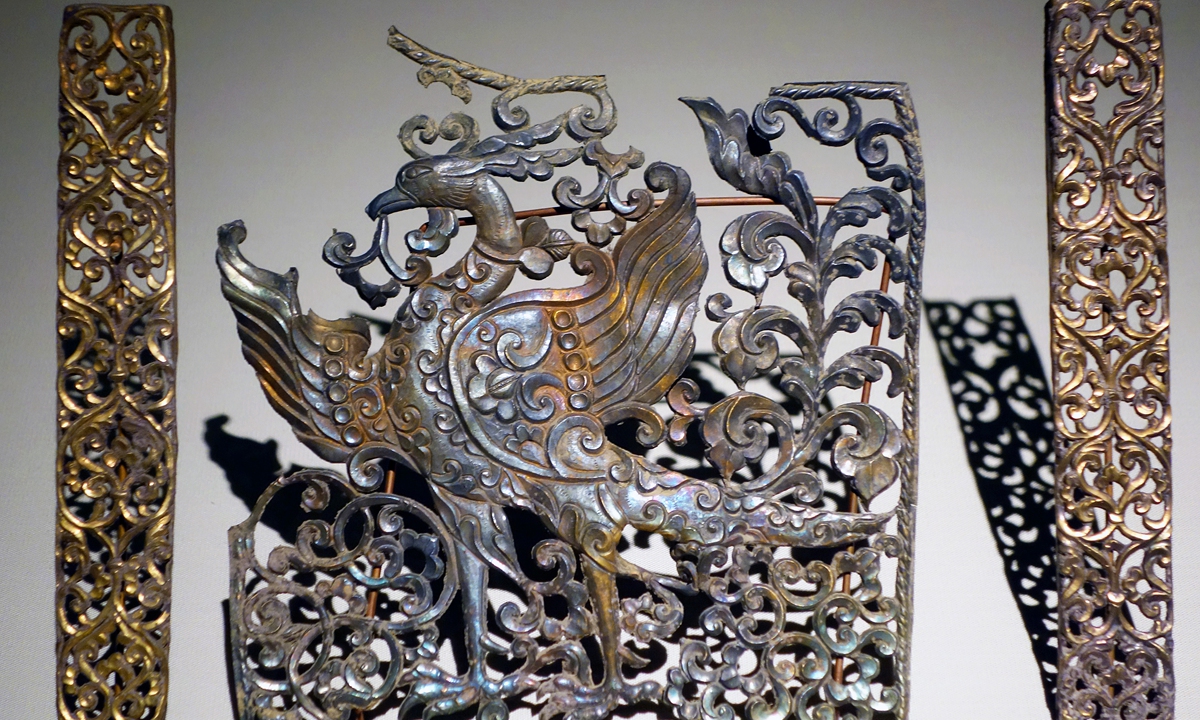ARTS / ART
Huge haul of cultural relics unearthed at Qinghai tomb

A silver ornament that is unearthed in the Haixi Mongolian and Tibetan Autonomous Prefecture, Northwest China's Qinghai Province Photo: VCG
The excavation of a tomb in Northwest China's Qinghai Province, known as the "Nine-floor Demon Tower," has discovered thousands of cultural relics from the Tang Dynasty (618-907). The excavation followed looting of the tomb two years ago.
The archeological team discovered different kinds of cultural relics including gold and silver items, glassware and textiles. The tomb is located in the Haixi Mongolian and Tibetan Autonomous Prefecture, according to a report from China News Service.
The tomb belonged to a noble ethnic minority group in the Tang Dynasty and many cultural relics were stolen from it in 2018.
The tomb was discovered by accident and the excavation aims to avoid further damage and loss of cultural relics. The relics are of great significance for the study of culture and history and should not be lost, Liu Zheng, a member of the China Cultural Relics Academy, told the Global Times on Wednesday.
The tomb was built with wood and stone, with parts above and below ground. Besides a long martyrdom pit that was found in the tomb passage, in which six male horses aged 4 to 6 years old were buried, some pits had the skeletons of humans who were buried alive with the dead and skeletons of other animals such as blue sheep and yaks that mainly live in the Qinghai-Tibet Plateau.
Liu said the practice of burying the living with the dead has a long history, and was only officially abolished in the middle of the Ming Dynasty (1368-1644). From primitive society to the Shang Dynasty (1600 BC-1046 BC), the tradition flourished.
The China News Service report noted that the excavation of the tomb will help with the research into the funeral customs of the region and the history of relations in the Tang Dynasty between the central government and ethnic minority groups.


